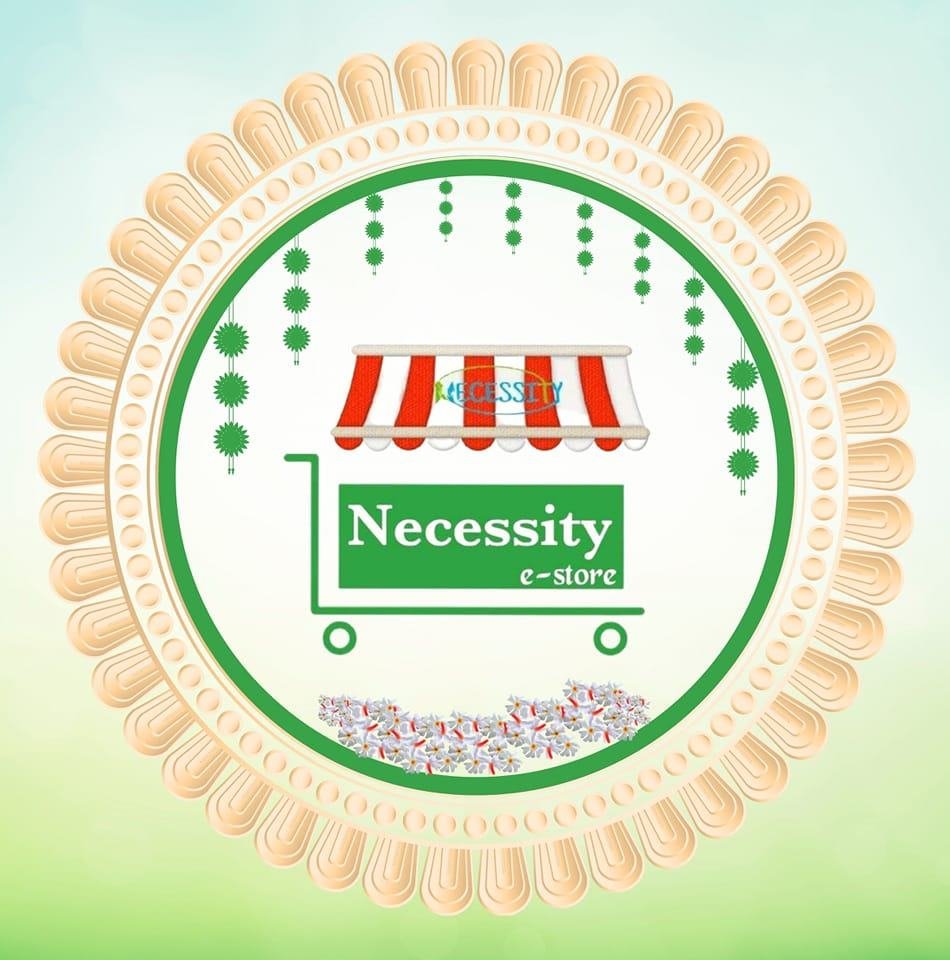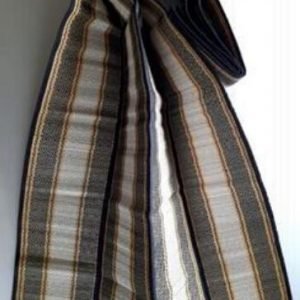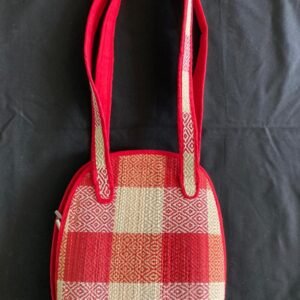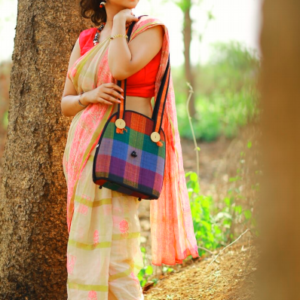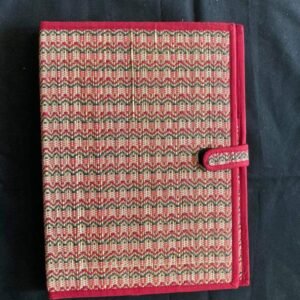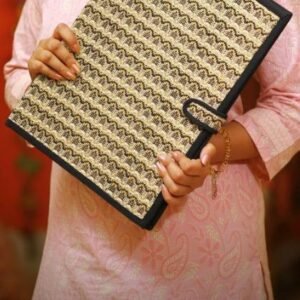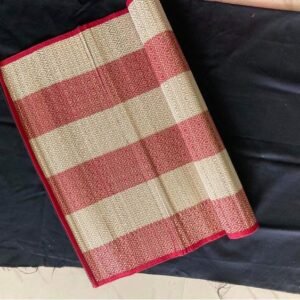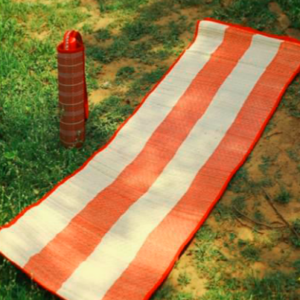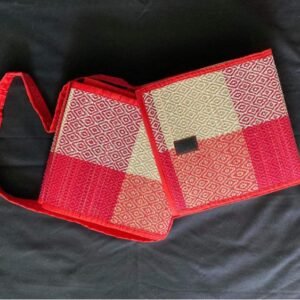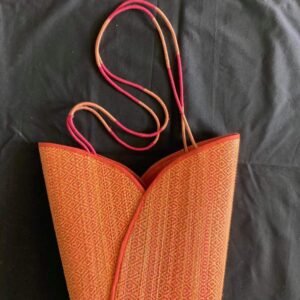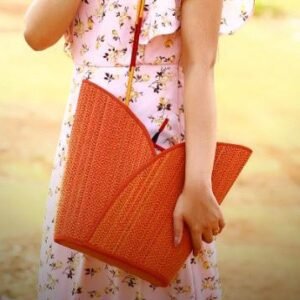Madur Art

Madur Art – A heritage of Bengal
Madurkathi or Madur art is an old practice of West Bengal in which floor mats are woven from a reed called Madur Kottir. Gauri Rani Jana & Gauri Bala Das from Sabang in West Bengal’s Paschim Medinipur district have been given the National Handicraft Award for their Madur artworks.
Atharva Veda the Mahabharata has the references of Madur Art. In Bengal the mat-waving tradition started in the Medieval Period. Derived its name from the Persian word “Masnad“, which means throne, the finest quality mats are called “Masland“. Using in a silk weft, they were made in Maslandpur (close to Tamluk,Medinipur), under the patronage of the Mughal Royals. Under the Jaigirdars act of 1744, Nawab Alibardi Khan made the supply of masland obligatory. Kasijora and Narajol were the most important mat markets of that time.
The simplest one, Ekh-rokha(one layered) madur are made of bamboo-frame loom, using cotton thread as the warp and single reeds as the weft. A double-reed weft, and greater skill is required to produce complex du-rokha(two layered) mats. Superior quality madurkathi is used in the making of masland . Highly skilled professionals weave the mats in special technique called “Saris”. Some of the most well known masland mat designs are flowers, honeycomb patterns (mouchak), rhomboidal motifs (barfi), and jharna. To color the mats the artists use seeds for red pigment, Rang gach (annatto) tree & haritaki fruit. Before weaving the dyed mat sticks are sun-dried. There are also decorative mats called nakshi pati & cold touch mats called Sitalpati, mosty made in different areas of northern Cooch Behar. Made from murta plant Sitalpati is one of the UNESCO Intangible Culture heritage.
The Madur khati art of West Bengal
In Medinipur, many villages of Mahishya caste depend on the Madur Art only. In most families the women weave the mats. Madurkathi, grows on marshy land. Even though frequent flooding around Medinipur makes many area unsuitable for crop cultivation the Madur industry provides the main income for various households out there.
Madhurkathi carries a great heritage along with the hardwork, tears & smile of many people within it. In this 21st century hustle culture, is there a quiet place where you can sit and feel that “santo shitalpati” drink tea??May be not!! So why not give it chance?! Your one “Buy now” click is just a small step towards giving food to a hungry Mahishya family.
Thank you.
-
- Sale!
- Crafts, CSWS Madur
Handmade Decorated Floor Mat
- ₹1,098.00 – ₹1,369.00
-
Select options Add to WishlistThis product has multiple variants. The options may be chosen on the product pageAdd to Wishlist
-
- Sale!
- Crafts, CSWS Madur, Summer Sale
Handmade Decorated Mat Curtain
- ₹715.00 – ₹1,216.00
-
Select options Add to WishlistThis product has multiple variants. The options may be chosen on the product pageAdd to Wishlist
-
- Sale!
- Bags, Crafts, CSWS Madur
Handmade Mat Small Purse
-
₹569.00Original price was: ₹569.00.₹423.00Current price is: ₹423.00. -
Add to cart Add to WishlistAdd to Wishlist
-
- Sale!
- Bags, Crafts, CSWS Madur
Handmade Notebook Tote Bag
-
₹1,156.00Original price was: ₹1,156.00.₹933.00Current price is: ₹933.00. -
Add to cart Add to WishlistAdd to Wishlist
-
- Sale!
- Crafts, CSWS Madur
Designed Mat Folder Board
-
₹895.00Original price was: ₹895.00.₹664.00Current price is: ₹664.00. -
Add to cart Add to WishlistAdd to Wishlist
-
- Sale!
- Crafts, CSWS Madur
Designed Yoga Mat Asan
-
₹1,250.00Original price was: ₹1,250.00.₹1,036.00Current price is: ₹1,036.00. -
Add to cart Add to WishlistAdd to Wishlist
-
- Sale!
- Bags, Crafts, CSWS Madur
BEACH MAT WITH BAG
-
₹1,800.00Original price was: ₹1,800.00.₹1,514.00Current price is: ₹1,514.00. -
Add to cart Add to WishlistAdd to Wishlist
-
- Sale!
- Bags, Crafts, CSWS Madur
Hand Crafted LOTUS BAG
-
₹1,500.00Original price was: ₹1,500.00.₹1,344.00Current price is: ₹1,344.00. -
Add to cart Add to WishlistAdd to Wishlist
FAQ's
Absolutely. Anything good looking and useful as these products are good as gift
No they are made very carefully to last years.
Of course. Made from murta plants, they are really worth. Try them out u’ll like them.
Yes they are made by genuinely skilled artists and are really good.
They are not fragile but do need a careful hand.
Thank you for asking this question. All handicrafts are packed very carefully before delivery.
Madur wall hangings are one of the best wall decor for any home.
Welly crafted madurs do have little weight but they are not heavy.
No there is absolutely no chance of color fading.
A well knitted & crafted madur lasts for years.
They come all sizes & shapes. One big size is capable of providing space to 50 adults.
Even though you don’t need a excessive cleaning routine but to maintain the glossy finish, dusting once in 2 months is good.

